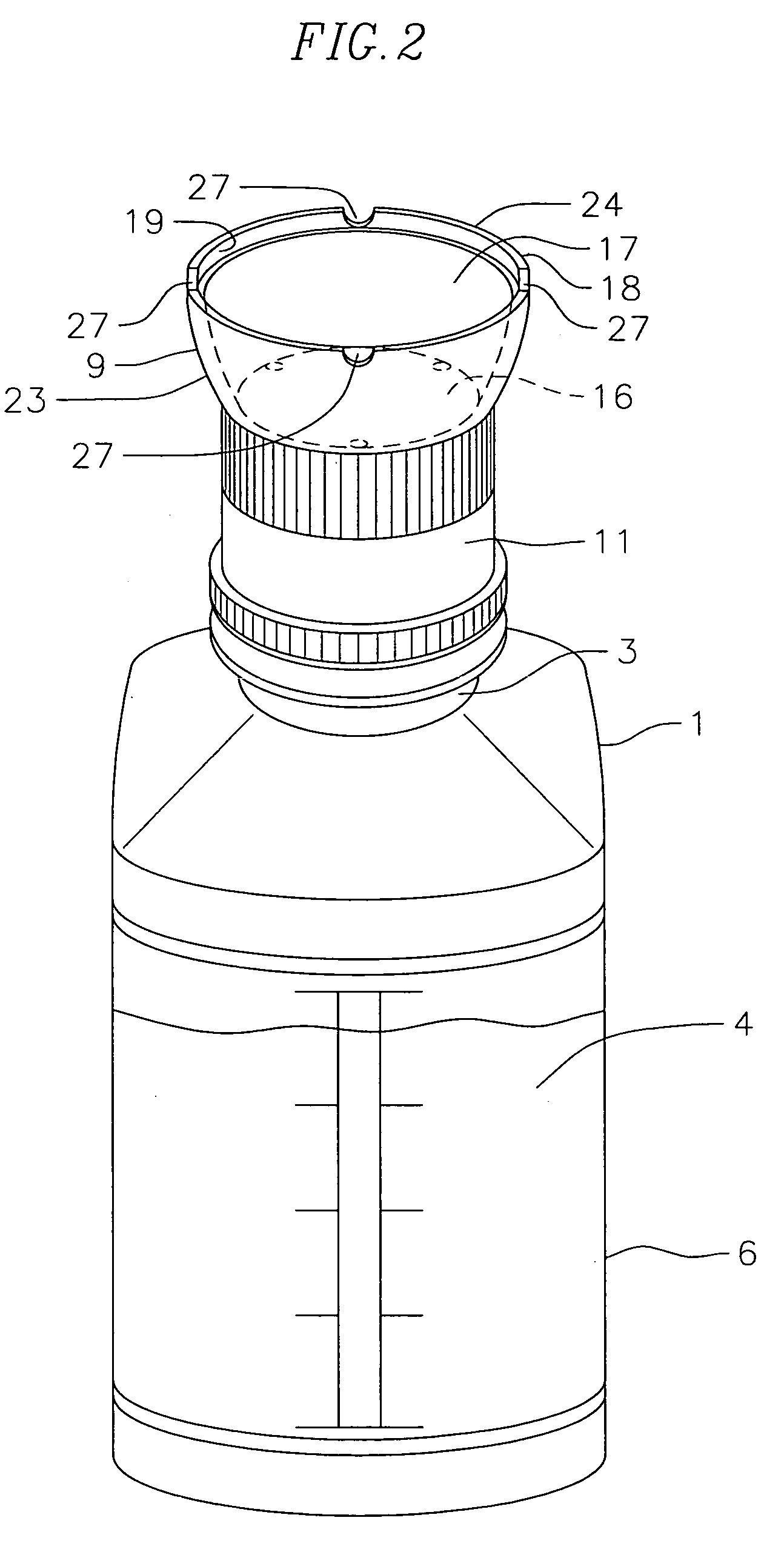Device for irrigating and inspecting a wound
a technology for irrigating and inspecting wounds, applied in medical science, surgery, diagnostics, etc., can solve the problems of rapid bacterial build-up and consequent infection, inability to irrigate wounds, so as to reduce lens distortion
- Summary
- Abstract
- Description
- Claims
- Application Information
AI Technical Summary
Benefits of technology
Problems solved by technology
Method used
Image
Examples
Embodiment Construction
[0018]FIG. 1 is a perspective view illustrating the cleansing fluid container 1 having a dispensing outlet 2 and a neck portion 3 where neck portion 3 ordinarily is threaded or otherwise adapted for closure by a cap (not shown) that seals the outlet and is removed when the cleansing fluid 4 is to be dispensed. Container 1 is commonly made of a resilient plastic material and the cleansing fluid 4 is generally a saline type solution. As can further be seen in FIG. 1, container 1 has a reservoir region 6 which retains the cleansing fluid 4. In order to dispense the cleansing fluid from the reservoir, other than by gravity, container 1 is resiliently constructed and manually compressible such that the cleansing fluid is dispensed under pressure from the reservoir through dispensing outlet 2.
[0019]Referring to FIG. 1, coupling member 7 of this invention is shown in perspective and in explosive association axially removed from container 1. Although not shown in FIG. 1, but can be seen in ...
PUM
 Login to View More
Login to View More Abstract
Description
Claims
Application Information
 Login to View More
Login to View More - R&D Engineer
- R&D Manager
- IP Professional
- Industry Leading Data Capabilities
- Powerful AI technology
- Patent DNA Extraction
Browse by: Latest US Patents, China's latest patents, Technical Efficacy Thesaurus, Application Domain, Technology Topic, Popular Technical Reports.
© 2024 PatSnap. All rights reserved.Legal|Privacy policy|Modern Slavery Act Transparency Statement|Sitemap|About US| Contact US: help@patsnap.com










